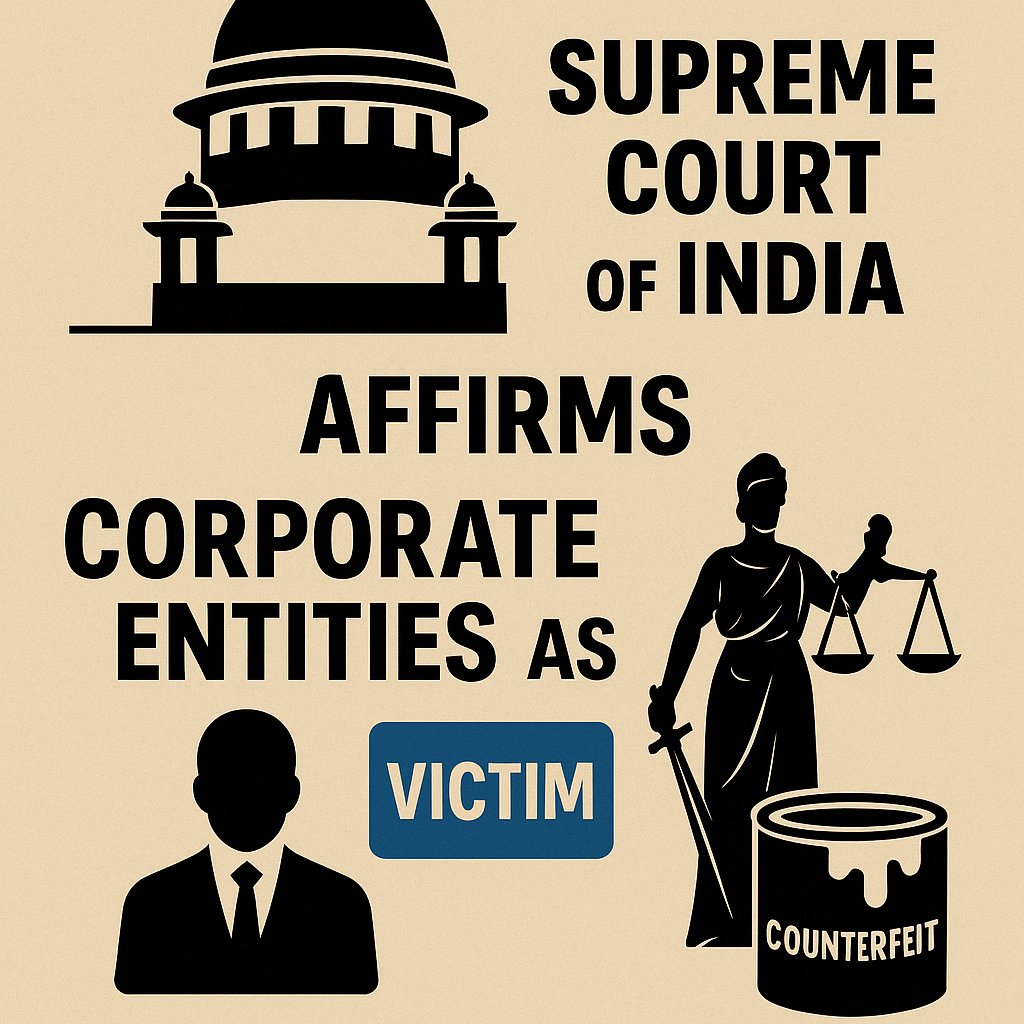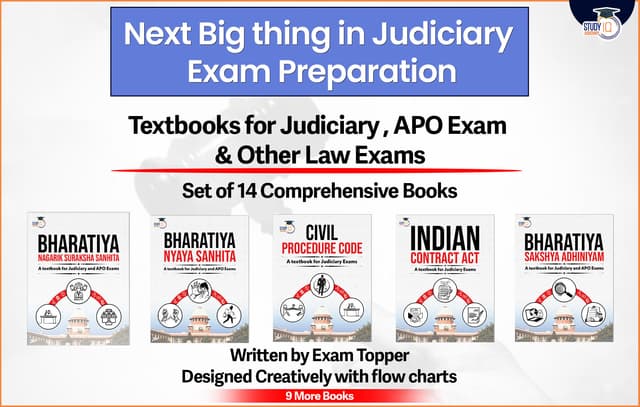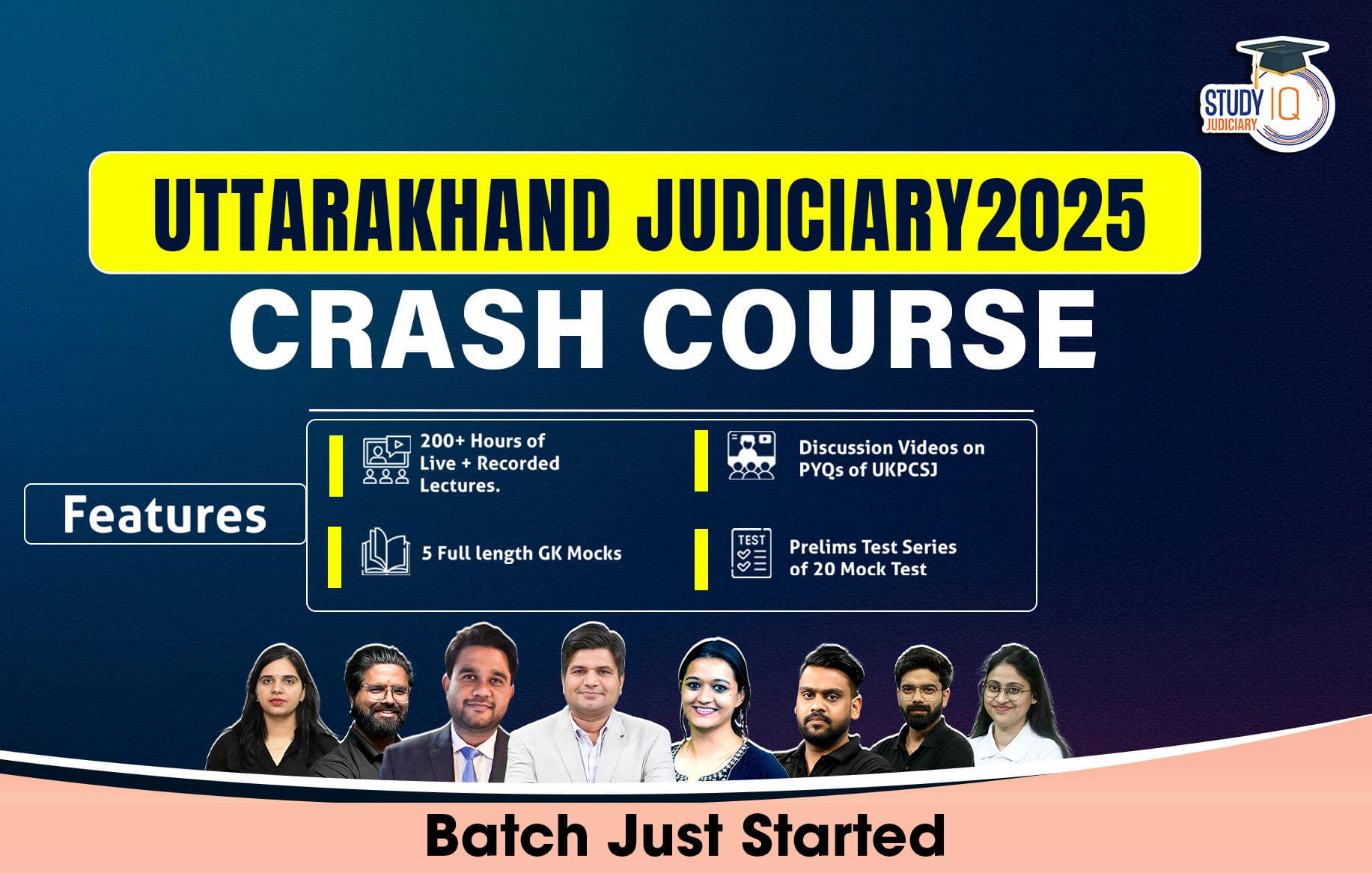Table of Contents
Why in the news?
In a landmark judgment, the Supreme Court of India has affirmed that corporate entities can be legally recognized as “victims” under the Code of Criminal Procedure (CrPC), specifically under Section 2(wa). This recognition empowers companies to file appeals against acquittals in criminal cases, including those involving intellectual property rights (IPR) violations.
Supreme Court’s Landmark Ruling under Asian Paints Case: Redefining “Victim”
The case arose when Asian Paints, a leading paint manufacturer, discovered counterfeit products being sold under its brand name. The accused, Ram Babu, was initially acquitted by the trial court, and when Asian Paints attempted to appeal, the Rajasthan High Court dismissed the appeal, stating that only the original complainant not the affected company could challenge the acquittal.
However, the Supreme Court overturned this interpretation. It held that the term “victim” includes any person, natural or juristic, who suffers harm or loss due to a criminal act, thereby encompassing companies whose brand reputation and financial interests are damaged by counterfeit activities.
The Court emphasised that the right to appeal under the proviso to Section 372 CrPC is a standalone right and not dependent on Section 378. A company need not be the original complainant to qualify as a victim. The harm caused by counterfeit goods, such as loss of consumer trust, financial damage, and dilution of brand value, is sufficient to establish victimhood.
This ruling sets a precedent that strengthens the legal recourse available to businesses facing IPR infringements and reinforces the judiciary’s commitment to protecting corporate rights in criminal proceedings.

Why Corporations Need Victim Status: Question Involved
The case presents a significant legal question regarding the interpretation of “victim” under the Code of Criminal Procedure (CrPC). Specifically, the inquiry focuses on whether the appellant qualifies as a “victim” according to Section 2(wa) when considered alongside the proviso to Section 372. This determination is crucial, as it directly affects the appellant’s right to appeal an acquittal, particularly when they are not the original complainant.
Dissecting Section 2(wa) of the CrPC: An Expansive Interpretation
Section 2(wa) defines a “victim” as any individual who has experienced harm, loss, or injury due to the actions or omissions of the accused. The proviso to Section 372 grants such victims the right to appeal against acquittals, convictions for lesser offences, or orders that impose inadequate compensation.
Consequently, the court must evaluate whether the appellant’s experiences meet the necessary criteria for victimhood within this legal framework. If the court affirms this status, the appellant would gain the ability to challenge the acquittal independently, without requiring intervention from the State or prior court permission.
Factual Matrix
A two-judge bench of the Supreme Court, comprising Justices Ahsanuddin Amanullah and Prashant Kumar Mishra, heard a case involving Asian Paints Ltd., which had suffered financial and reputational harm due to the sale of counterfeit paint products allegedly manufactured and distributed by the accused, Ram Babu.
The original criminal complaint was lodged not by the company itself, but by its authorised agent, invoking provisions under section 420 of the Indian Penal Code (IPC) about cheating and dishonestly inducing delivery of property and sections 63 and 65 of the Copyright Act, 1957, addressing infringement and possession of infringing copies.
Right to Appeal Under Section 372 CrPC: Independent of the State
Despite the seriousness of the allegations, the trial court acquitted the accused, and when Asian Paints sought to challenge this acquittal under the proviso to Section 372 of the CrPC, the Rajasthan High Court dismissed the appeal. The High Court reasoned that since the company was not the original “complainant” and its agent was it lacked the locus standi to file an appeal.
Asian Paints then approached the Supreme Court, arguing that it was the real party aggrieved by the counterfeit activity and thus qualified as a “victim” under Section 2(wa) of the CrPC, which defines a victim as any person who has suffered loss or injury due to the offence.
Decision of the Supreme Court: Asian Paints Precedent
On July 14, the Supreme Court addressed an important issue regarding the rights of victims to appeal under Section 372 of the Code of Criminal Procedure (CrPC). The case arose when Asian Paints Ltd., a company that suffered damages from the sale of counterfeit paint using its brand name, sought to contest a trial court’s decision acquitting the accused. The central question was whether an entity like Asian Paints, which was not the original complainant in the case, could invoke the proviso to Section 372 to file an appeal against the acquittal.
The Court clarified that the term “victim” under the proviso of Section 372 CrPC extends beyond just the individual who made the initial complaint. It encompasses any person or legal entity that has experienced harm or loss due to the crime in question. As a result, these victims have the right to appeal not only against an acquittal but also in cases where the accused is convicted of a lesser offence or where the compensation awarded is insufficient.
This interpretation underscores that the proviso is an independent provision that stands on its own, separate from other provisions in Chapter XXIX, such as Section 378, which pertains to appeals made by the State. Any interpretation denying a non-complainant victim the right to appeal would undermine this important safeguard.
The Court emphasised the unambiguous language of the proviso, which explicitly grants victims the right to appeal against any order of acquittal or inadequate conviction. Importantly, the definition of “victim” is based on the harm suffered rather than the procedural aspects of the case. Victims appealing under this provision would direct their appeals to the same appellate court that would normally handle appeals against conviction.
In referring to the case of Mahabir v. State of Haryana, the Court highlighted the legislature’s intent to empower victims, recognising them as the most affected parties in a crime. The purpose of the proviso is to ensure that victims have a straightforward right to appeal, free from unnecessary barriers. Furthermore, the right to appeal under this provision is applicable irrespective of which court issued the acquittal, whether a trial court or the first appellate court, with the understanding that appeals against first appellate court decisions will go to the High Court.
Conclusion
Ultimately, the Supreme Court ruled in favour of Asian Paints, allowing its appeal and directing the case to be brought back before the High Court for a thorough review of the merits. This ruling emphasises a victim-centric approach to criminal procedure, reinforcing the notion that parties harmed by criminal acts should have the ability to seek appellate recourse, regardless of their role in the initial prosecution.

 Reserved vs General Quota: Supreme Court...
Reserved vs General Quota: Supreme Court...
 Supreme Court’s Interim Order on the W...
Supreme Court’s Interim Order on the W...



















